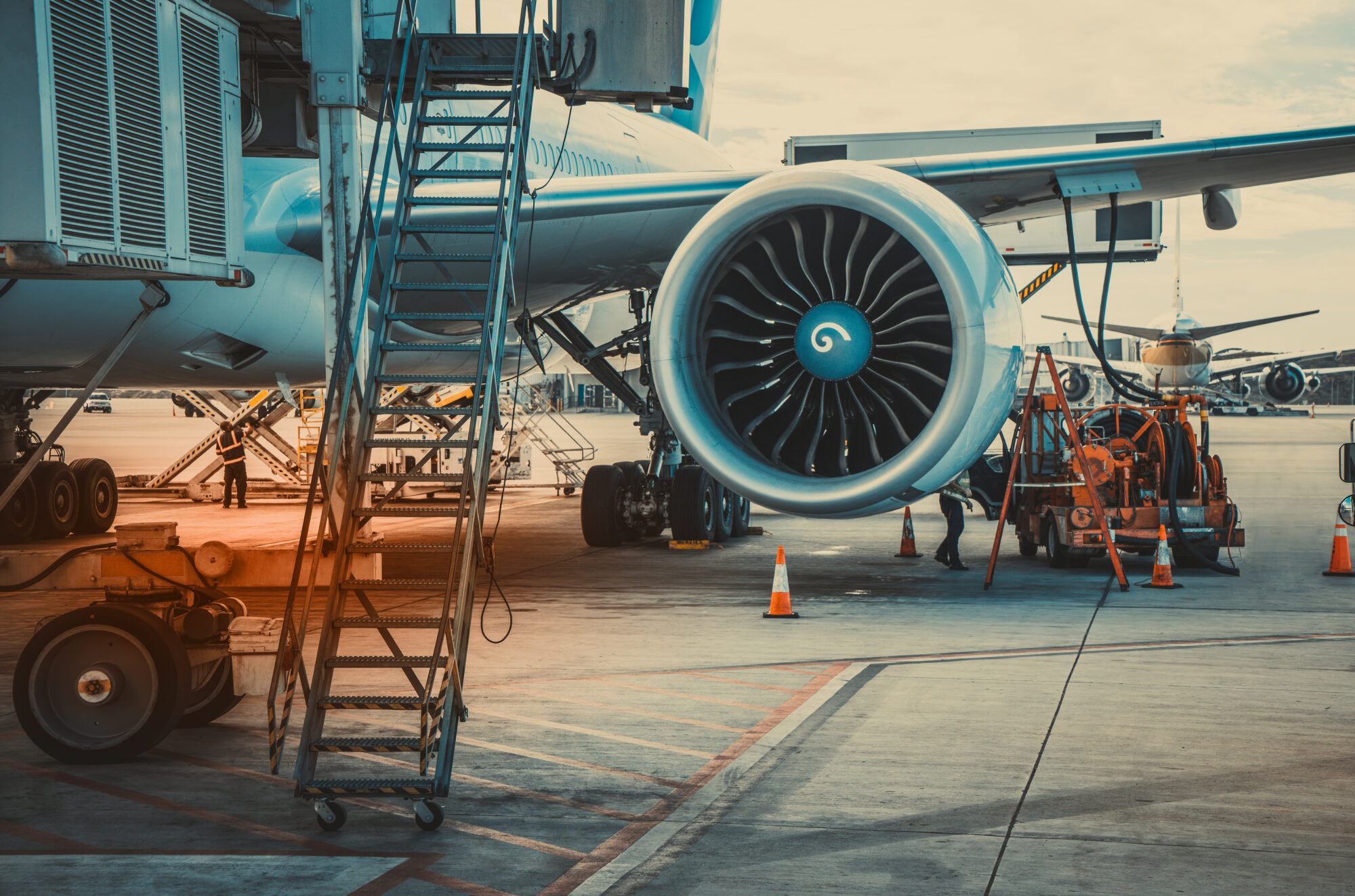Augmented reality technology has the potential to revolutionize aviation maintenance by providing advanced visualization, real-time information, and interactive training experiences. In this article, we will explore the benefits and applications of AR in the aviation maintenance industry. By harnessing the power of AR, aviation maintenance professionals can enhance efficiency, improve safety, and transform training methodologies.
Enhancing efficiency in aviation maintenance
AR overlays offer technicians a wealth of real-time information, eliminating the need to consult manuals or reference materials. Through AR-enabled smart glasses or heads-up displays, technicians can access relevant data, such as equipment specifications, maintenance procedures, and troubleshooting guides, right in their field of view. This augmented information allows technicians to quickly and accurately diagnose issues, streamline maintenance procedures, and reduce repair times. AR also enables technicians to visualize and interact with digital models overlaid onto physical equipment, facilitating precise alignments and installations.
Furthermore, AR can provide step-by-step instructions with visual cues and animations. Technicians can follow these instructions directly on the equipment, eliminating the need to constantly refer to printed manuals or handheld devices. The dynamic nature of AR instructions ensures that technicians always have the most up-to-date guidance, reducing the risk of errors and enhancing overall efficiency. Additionally, AR-enabled maintenance tools and diagnostics can highlight potential problem areas and guide technicians through complex tasks, enabling them to perform their duties more effectively.
Improving safety in aviation maintenance
AR technology enhances safety in aviation maintenance by improving situational awareness and providing visualizations of potential hazards. Through AR-based heads-up displays or smart glasses, maintenance personnel can access critical information, such as equipment status, warnings, and alerts, without diverting their attention from the task at hand. This real-time information allows technicians to make informed decisions and take appropriate actions to ensure safety.
Augmented reality in aviation industry can also provide augmented visualizations of hidden components or systems, allowing technicians to see through surfaces and identify potential issues that may not be visible with the naked eye. For example, AR can overlay thermal imaging or X-ray-like views to detect overheating components or internal faults. By identifying these hidden problems early on, maintenance personnel can address them proactively, mitigating the risk of in-flight malfunctions or accidents.
Additionally, AR-based sensors can monitor equipment conditions in real-time, detecting anomalies or deviations from normal operating parameters. Technicians can receive instant alerts and notifications through their AR devices, enabling them to respond promptly and take preventive measures to avoid safety hazards. The ability to monitor and react to equipment malfunctions or irregularities in real-time significantly enhances safety in aviation maintenance operations.
Revolutionizing training in aviation maintenance
AR technology offers innovative training solutions for aviation maintenance personnel. By simulating maintenance scenarios in a virtual environment, AR allows technicians to gain hands-on experience and practice their skills in a safe and controlled setting. Interactive virtual models of aircraft systems and components can be overlaid onto physical equipment, allowing technicians to visualize and interact with them as if they were working on real aircraft.
AR-based training modules provide step-by-step guidance, offering immersive and interactive learning experiences. Technicians can practice various maintenance tasks, perform system inspections, and troubleshoot problems virtually, receiving real-time feedback and guidance. This type of training enhances knowledge retention, improves understanding of complex systems, and allows technicians to build confidence in their abilities.
Moreover, AR technology enables remote training and collaboration. Through AR-enabled devices, instructors or experienced technicians can provide real-time guidance and support to trainees located at different locations. This capability eliminates the need for trainers to travel to different sites, reduces training costs, and facilitates knowledge sharing across teams and locations.
By leveraging AR for training, aviation maintenance professionals can acquire and refine their skills in a more engaging, efficient, and effective manner. This ultimately leads to increased proficiency, reduced errors, and enhanced overall maintenance performance.

presentation to try
Nsflow in action
Adoption of AR in aviation
Numerous aviation companies have already adopted AR technology in their maintenance operations, yielding significant benefits. For instance, companies have reported up to 30% reduction in maintenance and repair times by leveraging AR overlays and real-time information.
AR-enabled guidance and instructions have minimized errors and improved the accuracy of maintenance procedures, resulting in enhanced efficiency and cost savings. Companies like Airbus and Boeing implement AR for e.g. aircraft engine maintenance. Technicians utilize AR-enabled smart glasses to access digital overlays of engine schematics, step-by-step instructions, and maintenance logs. The AR system highlights critical components, provided real-time status updates, and offered animations for complex tasks. This streamlined the maintenance process, reduced human errors, and increased overall productivity.
Another example is an aircraft manufacturer that adopted AR for assembly line maintenance. Technicians were equipped with AR devices that provided visual cues, 3D models, and audio instructions during assembly tasks. This AR-guided assembly resulted in reduced assembly times, improved accuracy, and minimized rework, ultimately increasing production efficiency and reducing costs.
Augmented reality aviation – the lookout for the future
The future of AR in aviation maintenance looks promising, with ongoing advancements and emerging trends on the horizon. Integration of AR with other technologies, such as Internet of Things (IoT) and Artificial Intelligence (AI), holds great potential. For example, AR devices could be connected to IoT sensors embedded in aircraft components, providing real-time data and analytics for predictive maintenance and condition monitoring.
Furthermore, AI algorithms can analyze vast amounts of data collected through AR devices, identifying patterns and anomalies that can optimize maintenance processes. Machine learning algorithms can learn from historical maintenance data to generate predictive maintenance schedules, identifying potential issues before they lead to critical failures.
The use of wearable AR devices, such as smart glasses, is also gaining traction in the aviation maintenance industry. Wearable AR devices offer hands-free operation, allowing technicians to access information and instructions while keeping their hands free to perform tasks. This improves convenience, mobility, and overall work efficiency.
Moreover, the integration of digital twins into AR systems is an emerging trend in aviation maintenance. Digital twins are virtual replicas of physical assets or systems, such as aircraft or specific components. By combining AR with digital twin technology, technicians can visualize the real-time status of equipment, monitor performance, and simulate maintenance procedures in a virtual environment before implementing them on the actual aircraft. This not only reduces the risk of errors but also enhances planning and decision-making processes.
As AR technology continues to evolve, the aviation industry is expected to witness further advancements in areas such as remote assistance, augmented inspections, and real-time collaboration. Remote assistance enables experts to provide guidance and support to on-site technicians through AR-enabled devices, reducing the need for travel and facilitating faster problem resolution. Augmented inspections involve using AR to overlay digital information and annotations onto physical aircraft, facilitating thorough and efficient inspections. Real-time collaboration through AR enables multiple technicians to work together, regardless of their physical location, sharing information and expertise in real-time.
The integration of AR into maintenance workflows enhances situational awareness, provides real-time information and guidance, and facilitates immersive and interactive training experiences. As the aviation industry embraces AR, it opens up new possibilities for increased productivity, reduced costs, and improved overall maintenance performance, ultimately driving the industry forward into a more efficient and technologically advanced future.



















